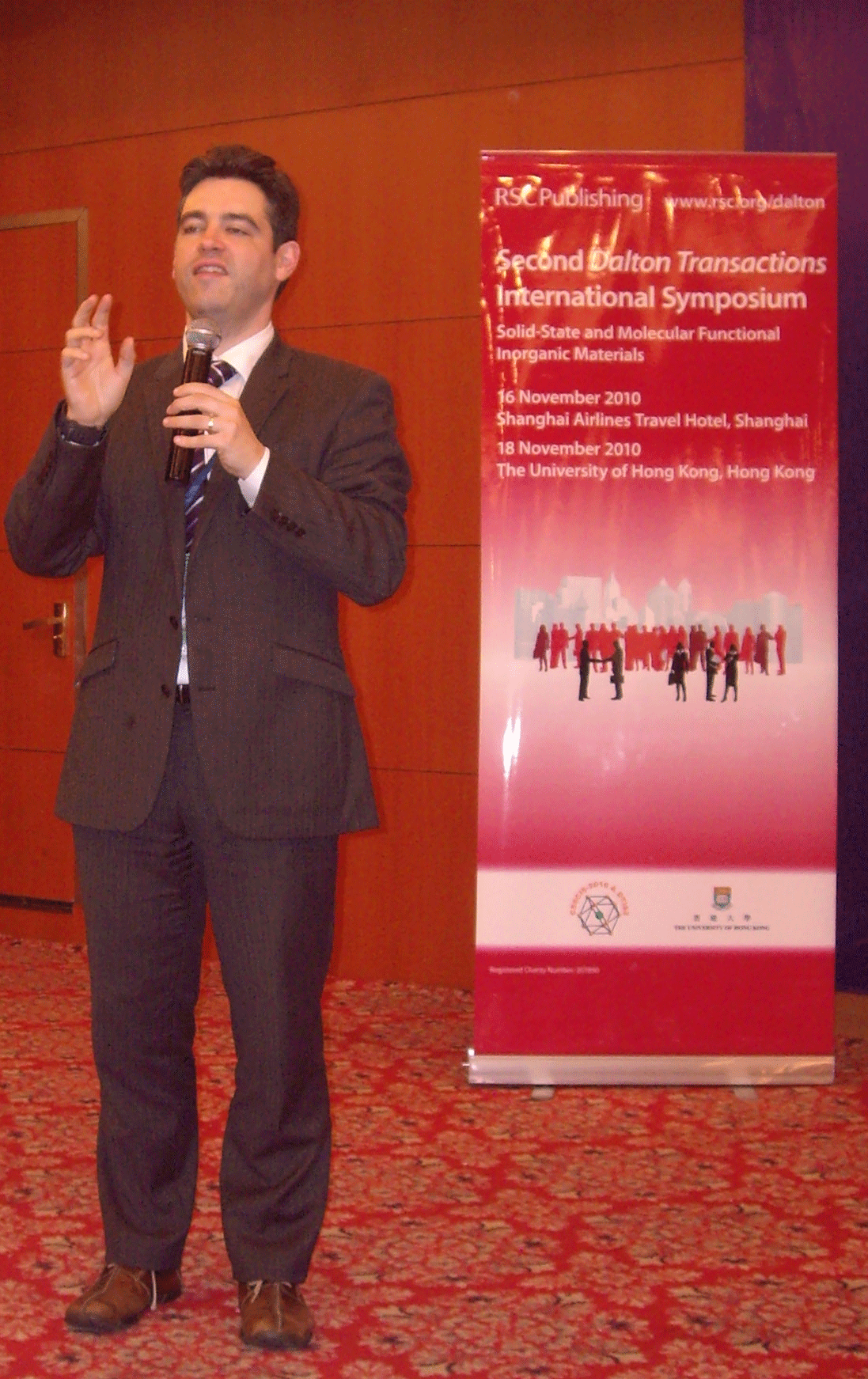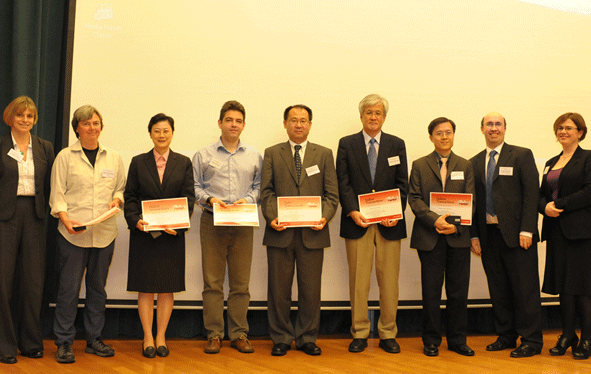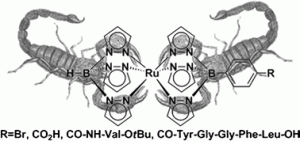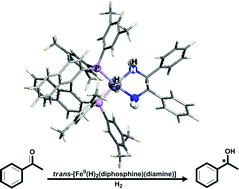 Dalton Transactions celebrates the publication of its 40th volume in 2011! Since its first issue was published in 1972, Dalton Transactions has gone from strength to strength with growth in published articles of 122% over the last five years alone and an impact factor now at 4.1 – above 4 for the first time!
Dalton Transactions celebrates the publication of its 40th volume in 2011! Since its first issue was published in 1972, Dalton Transactions has gone from strength to strength with growth in published articles of 122% over the last five years alone and an impact factor now at 4.1 – above 4 for the first time!
During 2011 we have lots of exciting events planned to celebrate…..look out for our special 40th Anniversary issue which will feature articles by Editorial and Advisory Board members ‘old and new ‘ and also our Anniversary Perspective articles from our Editorial Board member.
 We will also publish a series of Anniversary Editorials compiled by members of the inorganic and organometallic community charting Dalton Transactions‘ progress in the last 40 years. In addition, many more activities are planned so keep your eyes peeled here on the Dalton Transactions Blog 40th Anniversary Category for more info throughout the year. I would like to invite everyone to provide us with your suggestions for how to celebrate the journal’s anniversary – if you have an idea, why not post it as a comment on the blog?
We will also publish a series of Anniversary Editorials compiled by members of the inorganic and organometallic community charting Dalton Transactions‘ progress in the last 40 years. In addition, many more activities are planned so keep your eyes peeled here on the Dalton Transactions Blog 40th Anniversary Category for more info throughout the year. I would like to invite everyone to provide us with your suggestions for how to celebrate the journal’s anniversary – if you have an idea, why not post it as a comment on the blog?
In anticipation of the beginning of our Anniversary year we have turned to Top of the Pops for inspiration and the Top 40 cited Dalton Transactions articles according to ISI* will be FREE to read until the end of January 2011. What are they you may ask….let the countdown begin…
First installment….Top Cited Dalton Transactions Articles 40-31…
40 New C–N and C–C bond forming reactions catalyzed by titanium complexes
Aaron L. Odom
Dalton Trans., 2005, 225-233 DOI: 10.1039/B415701J, Perspective
39 Bis(bidentate) complexes of iminobis(diphenylphosphine chalcogenides) [M{N(XPPh2)2-X,X′}2](X = S or Se; M = Ni, Pd or Pt)
Pravat Bhattacharyya, Josef Novosad, Julian Phillips, Alexandra M. Z. Slawin, David J. Williams and J. Derek Woollins
J. Chem. Soc., Dalton Trans., 1995, 1607-1613 DOI: 10.1039/DT9950001607, Paper
38 A novel two-dimensional rectangular network. Synthesis and structure of {[Cu(4,4′-bpy)(pyz)(H2O)2][PF6]2}n (4,4′-bpy = 4,4′-bipyridine, pyz = pyrazine)
Ming-Liang Tong, Xiao-Ming Chen, Xiao-Lan Yu and Thomas C. W. Mak
J. Chem. Soc., Dalton Trans., 1998, 5-6 DOI: 10.1039/A706363F, Paper
37 Study on composition, structure and formation process of nanotube Na2Ti2O4(OH)2
Jianjun Yang, Zhensheng Jin, Xiaodong Wang, Wei Li, Jingwei Zhang, Shunli Zhang, Xinyong Guo and Zhijun Zhang
Dalton Trans., 2003, 3898-3901 DOI: 10.1039/B305585J, Paper
36 5,5′-Dicyano-2,2′-bipyridine silver complexes: discrete units or co-ordination polymers through a chelating and/or bridging metal–ligand interaction
He-Ping Wu, Christoph Janiak, Gerd Rheinwald and Heinrich Lang
J. Chem. Soc., Dalton Trans., 1999, 183-190 DOI: 10.1039/A807450J, Paper
35 Redox behaviour and reactivity of some di-Schiff base copper(II) complexes towards reduced oxygen species
Maria Lúcia Pires Santos, Izilda Aparecida Bagatin, Eleonice Maria Pereira and Ana Maria Da Costa Ferreira
J. Chem. Soc., Dalton Trans., 2001, 838-844 DOI: 10.1039/B004985I, Paper
34 Silole-containing σ- and π-conjugated compounds
Shigehiro Yamaguchi and Kohei Tamao
J. Chem. Soc., Dalton Trans., 1998, 3693-3702 DOI: 10.1039/A804491K, Paper
33 Serendipitous assembly of polynuclear cage compounds
Richard E. P. Winpenny
J. Chem. Soc., Dalton Trans., 2002, 1-10 DOI: 10.1039/B107118C, Perspective
32 Evidence for hydrogen bonding in solutions of 1-ethyl-3-methylimidazolium halides, and its implications for room-temperature halogenoaluminate(III) ionic liquids
Anthony G. Avent, Penelope A. Chaloner, Martin P. Day, Kenneth R. Seddon and Thomas Welton
J. Chem. Soc., Dalton Trans., 1994, 3405-3413 DOI: 10.1039/DT9940003405, Paper
31 Thermal, pressure and light switchable spin-crossover materials
José Antonio Real, Ana Belén Gaspar and M. Carmen Muñoz
Dalton Trans., 2005, 2062-2079 DOI: 10.1039/B501491C, Perspective
Next installment 30-21 coming to the Dalton Transactions Blog soon……..
*Top cited articles according to ISI on the 17th November 2010 – please note ISI data includes articles published from 1993-2010 only.
Comments Off on Countdown to the Dalton Transactions 40th Anniversary!












 Catalytic alkylation of aryl Grignard reagents by iron(III) amine-bis(phenolate) complexes
Catalytic alkylation of aryl Grignard reagents by iron(III) amine-bis(phenolate) complexes ![[Fe(dppTTF)2][Ni(mnt)2]2(BF4)·PhCN](https://blogs.rsc.org/dt/files/2010/11/c0dt01092h-ga-300x187.gif)
![The incorporation of [Ru(p-cymene)] complexes into the ferritin cavity without causing degradation of its cage cavity](https://blogs.rsc.org/dt/files/2010/11/c0dt00955e-ga1.gif) Incorporation of organometallic Ru complexes into apo-ferritin cage
Incorporation of organometallic Ru complexes into apo-ferritin cage






 Syntheses of 8-quinolinolatocobalt(III) complexes containing cyclen based auxiliary ligands as models for hypoxia-activated prodrugs
Syntheses of 8-quinolinolatocobalt(III) complexes containing cyclen based auxiliary ligands as models for hypoxia-activated prodrugs trans-FeII(H)2(diphosphine)(diamine) complexes as alternative catalysts for the asymmetric hydrogenation of ketones? A DFT study
trans-FeII(H)2(diphosphine)(diamine) complexes as alternative catalysts for the asymmetric hydrogenation of ketones? A DFT study